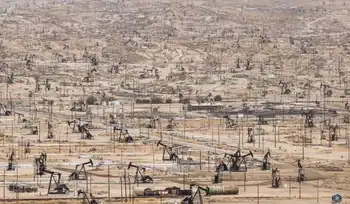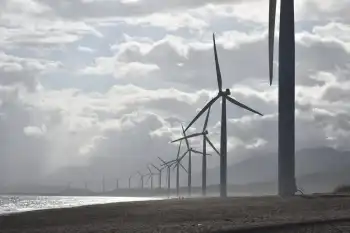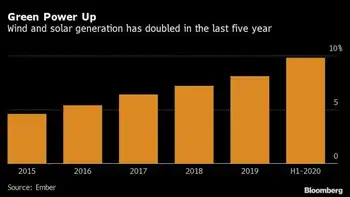Google-backed power line clears hurdle
- Google and its partners cleared the first major hurdle with U.S. regulators to build a $5 billion transmission line that would transport electricity from wind farms off the Atlantic coast.
The companies backing the project can earn a 12.59 percent return on their equity investment in the proposed power line, the Federal Energy Regulatory Commission ruled.
The project, which consists of two parallel transmission lines stretching from northern New Jersey to southern Virginia, could transport up to 6,000 megawatts of electricity that would provide power to 1.9 million households.
The transmission lines would each extend 250 miles along the mid-Atlantic coast. The electricity carried by the lines would connect with the main electric grid at onshore sites in New Jersey, Delaware, Maryland and Virginia.
The project still needs approval from the Interior Department, several state agencies and the regional power grid operator, PJM. The project's backers are Google, Good Energies, a private firm, and Japan's Marubeni Corp.
The companies hope to have the first phase of the transmission line operating in 2016.
The transmission line project will help the mid-Atlantic states meet their goals to generate more of their electricity from renewable energy sources, such as wind power.
"Without a strong transmission backbone, offshore wind developers would need to build one or more individual radial transmission lines from each offshore wind project to the shore," the project's sponsors said in a filing with FERC.
The mid-Atlantic region holds 20 percent of the U.S. population, but the region has limited access to land-based renewable energy resources.
There are no major offshore wind farms operating in the United States at the moment, though more than a dozen have been proposed. One of the earliest projects expected to come online is Cape Wind off Massachusetts that will consist of 130 wind towers providing electricity to about 400,000 homes by 2013.
Related News

How Should California Wind Down Its Fossil Fuel Industry?
LOS ANGELES - California’s energy past is on a collision course with its future. Think of major oil-producing U.S. states, and Texas, Alaska or North Dakota probably come to mind. Although its position relative to other states has been falling for 20 years, California remains the seventh-largest oil-producing state, with 162 million barrels of crude coming up in 2018, translating to tax revenue and jobs.
At the same time, California leads the nation in solar rooftops and electric vehicles on the road by a wide margin and ranking fifth in installed wind capacity. Clean energy is the state’s future. By law,…




